Two Nights in the Middle Ages
Albarracin, Aragon, May 7-8
We hoped for a small town experience between the metropolises of Barcelona and Madrid, and we found it in Albarracin, an isolated village of 1164 inhabitants located in the mountains north of Valencia at 1200 meters. Formerly occupied by Celts and Romans, present-day Albarracin was built by Moorish and Christian feudal rulers. Like Italy’s San Gimignano and France’s Carcassonne, it has retained its medieval buildings largely intact, but it has one great advantage over these competitors—very few tourists.
Getting to Albarracin was definitely not half the fun. Georgia drove into the mountains on a secondary road that steadily deteriorated as we climbed. After a blinding hail storm forced us to stop on one bend, we doubted that we were on the right road and drove into the next village to seek directions. We were dismayed to find that the only person out and about that afternoon was a grizzled jubilado carrying a half-empty wine bottle. We nonetheless asked and were told that we were indeed on the right road, potholes and all. Thus assured, we continued on and reached Albarracin two hours later.
We had called ahead for reservations at a Michelin-recommended inn near the highest point of Albarracin. The problem was finding the place since we had no map and straight was not an adjective known to medieval city planners. The locals were happy to help, however, and after abandoning our car and asking at least five people, including a member of the Guardia Civil, we reached the Casa de Santiago, where we stayed for two days in one of the village’s oldest buildings, which had been occupied by priests in Albarracin’s glory days. (We hasten to add, however, that the plumbing dated from the late 20th Century.) The culinary delights of this region are baby lamp chops and rabbit—both of which we enjoyed during our stay as well as the fine wine of the region.
The accompanying photos will give you some idea of Albarracin’s extraordinary architecture, which features houses that slant outward so that the upper stories occupy the airspace above the narrow streets. Equally outstanding were the people, who could not have been friendlier. Sorely in need of a haircut, Todd was directed to a unisex shop, where he received an excellent result from the single operator for about $10. While he was in the chair, Georgia visited the neighboring convent and chatted up the nuns, who were delighted to have an American guest.
The final striking aspect of Albarracin was its location in the very thinly populated Montes Universales, apparently a well-known hiking area. Armed with a vaguely written guide book, Todd went for a three-hour hike one afternoon and, after leaving town, saw literally no one during his expedition, although he was, at least most of the time, on marked trails that crossed a few semi-cultivated areas. Georgia climbed to the top of the city walls and spent the afternoon reading, surrounded by masses of spring wild flowers.
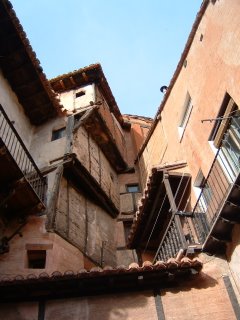
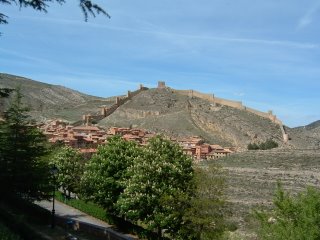
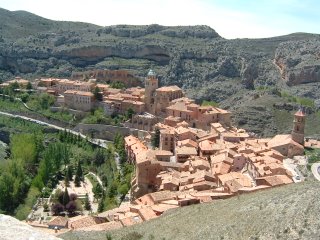
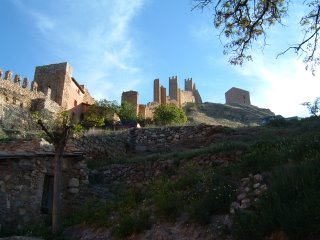
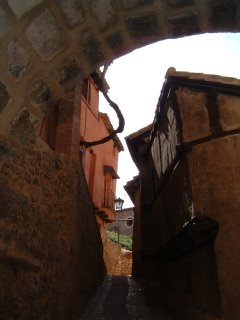
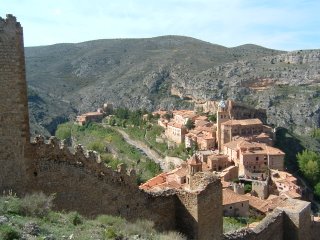
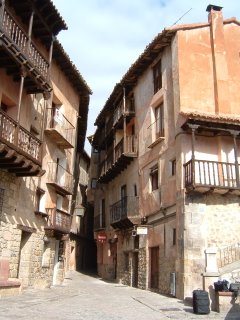
With considerable regret we left Albarracin on May 9 and headed for Madrid, making stops in Teruel to see the city’s beautiful Mudejar towers and in Molina de Aragon for a great lunch (turbot escabeche) and a visit to the fortress overlooking the town.
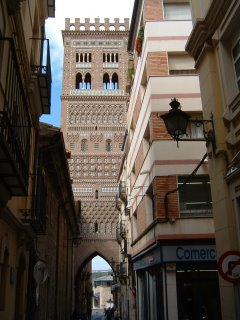
Teruel
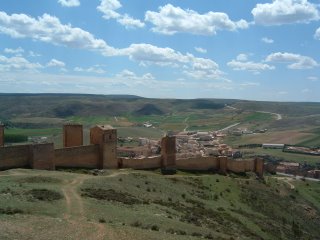
Molina de Aragon

0 Comments:
Post a Comment
<< Home